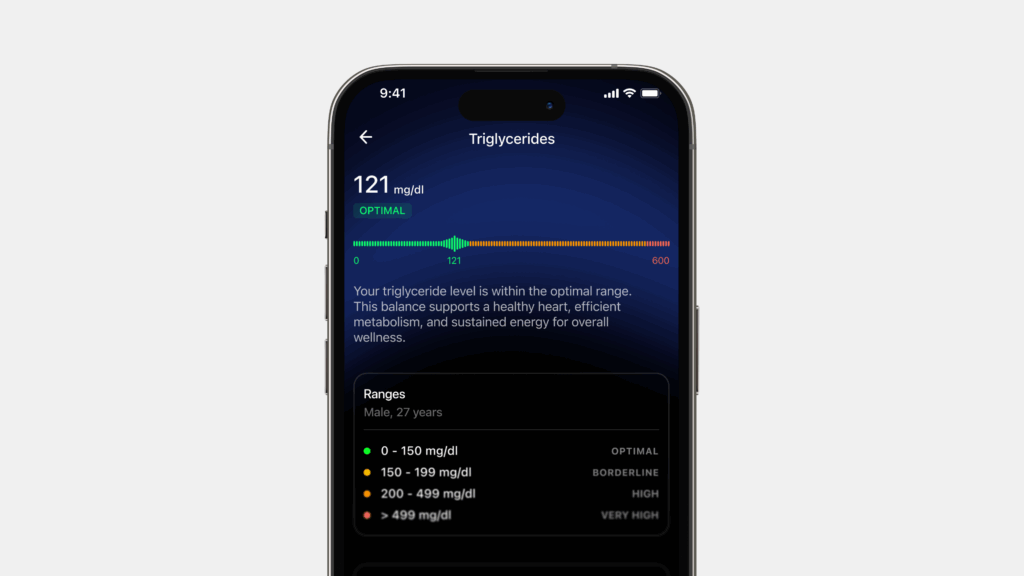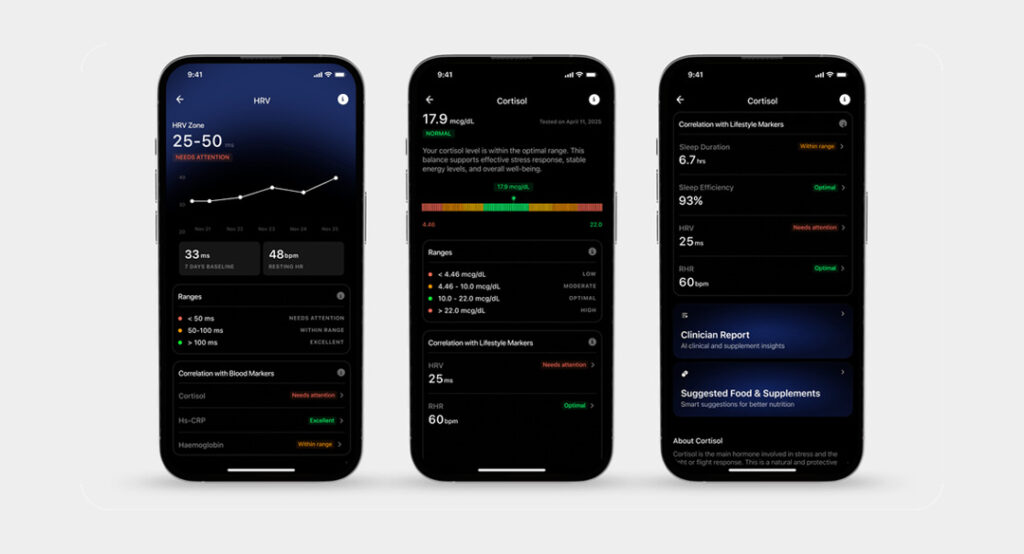Glucose is the fuel that the human body runs on. While glucose metabolism is influenced by a number of genetic and environmental factors, growing evidence suggests that hormonal changes during menopause can throw blood sugar levels out of whack.
We examine what menopause is, the changes the body undergoes, and how that can affect hypoglycemia and blood glucose levels.
Highlights
- Falling estrogen levels during menopause can lead to insulin resistance and higher blood sugar.
- Visceral fat gain and early menopause both raise the risk of type 2 diabetes.
- Diet, exercise, stress management, and hydration help stabilize glucose levels.
What is menopause?
Menopause marks the end of the menstrual cycle and a woman’s reproductive years. A person officially enters menopause when they’ve not had a menstrual period for a year.
The ovaries make the primary female hormones Estrogen and Progesterone, which control menstruation and ovulation (the release of eggs). Ovarian function declines with age, leading to missed or irregular periods, and eventually stops altogether, resulting in menopause.
Menopause and blood sugar
Even before menopause officially kicks in, the ovaries start producing fewer hormones, causing periods to become irregular.
This also leads to a decrease in the production of estrogen and progesterone, which plays a major role in blood sugar fluctuations. As these hormonal levels go up and down, blood sugar levels also sway. Menopause occurs in three stages: perimenopause, menopause, and postmenopause.
Spikes in estrogen have been known to make the body more sensitive to insulin (which may lead to hypoglycemia), while progesterone can increase insulin resistance (which leads to hyperglycemia).
This decline in estrogen and progesterone levels is one of the earliest signs of perimenopause or menopause transition, which, as the name suggests, prepares the body for menopause.
Estradiol is the main form of estrogen found in women prior to menopause. Normal estradiol levels can be anywhere in the range of 30–400 picograms per millilitre (pg/mL).
Post-menopause, it falls below 30 pg/mL, when the ovaries stop producing estrogen, and the same is obtained primarily from body fat. A decrease in estrogen levels gives rise to symptoms including hot flashes, night sweats, and mood swings, which are associated with changes in blood sugar levels, including spikes (hyperglycemia) and crashes (hypoglycemia).
Progesterone, on the other hand, is the hormone that helps us sleep. Normal progesterone levels before menopause should be around 1.5 nanograms per millilitre (ng/ml). After menopause, they fall below 0.5 ng/ml. When progesterone levels decrease during perimenopause and after, women have difficulty falling and staying asleep.
Studies suggest that when we don’t get adequate sleep, the body releases cortisol, the stress hormone, during the day to trigger wakefulness. It releases glucose in the bloodstream through gluconeogenesis in the liver, elevating blood glucose levels.
Sleep deprivation, which leads to a sustained increase in cortisol, is a recipe for high blood sugar. Thus the hormonal imbalance in perimenopause and after spawns a cluster of symptoms that directly impact blood sugar levels.
Five impacts of menopause on blood glucose

- Hormonal fluctuations
Insulin is a hormone produced by the pancreas that helps the body use glucose for the fuel it needs and stores the rest. Estrogen optimizes insulin activity in the body, enhancing glucose uptake and reducing insulin resistance (Sex differences in insulin action and body fat distribution, Carr, 2003). Consequently, premenopausal women, as compared to men of the same age, tend to have greater insulin sensitivity and a lower incidence of type 2 diabetes (Do women develop type 2 diabetes at a higher body mass index than men?, Logue et al., 2011).
This, however, is not the case after menopause, because declining estrogen levels are associated with increased insulin resistance and higher fasting glucose (Estrogen: metabolic considerations, Clegg et al., 2006). Studies have shown a correlation between menopause and elevated fasting plasma glucose levels (The menopause and obesity: influence of body fat distribution, sex hormones and insulin, Lovejoy et al., 2008).
- Visceral fat
During and after menopause, weight gain tends to be focused around the abdominal region. This fat, known as visceral fat, secretes a protein called retinol-binding protein 4, which has been linked to insulin resistance (Serum retinol-binding protein 4 contributes to insulin resistance in obesity, Yang et al., 2005). High amounts of visceral fat are strongly associated with insulin resistance and the development of type 2 diabetes (Abdominal obesity and type 2 diabetes: visceral fat is the culprit, Després, 2006).
- Hot flashes
Hot flashes, one of the characteristic symptoms of menopause, have been associated with insulin resistance and elevated blood sugar (Vasomotor symptoms and insulin resistance in postmenopausal women, Thurston et al., 2012). They can be an indicator of insulin resistance, which gradually leads to elevated blood glucose levels. In a study of about 1,000 postmenopausal women, higher blood sugar levels were correlated with more severe physical and psychological menopausal symptoms (Association of hot flashes with glucose metabolism in postmenopausal women, Huang et al., 2014).
One study, which followed 3,000 women in their 40s and 50s over an eight-year period, found that the frequency of hot flashes increased in women with higher blood sugar levels, regardless of their weight or estrogen levels.
Another study found that postmenopausal women with metabolic syndrome were more likely to experience hot flashes and sweating (Metabolic syndrome and vasomotor symptoms in midlife women, Herber-Gast et al., 2013).
Hot flashes also trigger changes in the autonomic nervous system, which is in charge of regulating bodily functions such as temperature. During a hot flash, the heart races, blood gushes to the skin, and the skin temperature shoots up and falls as the body starts to give off heat. The autonomic nervous system is also involved in glucose regulation, so these autonomic shifts may contribute to blood glucose dysregulation during hot flashes.
- Early menopause
The average age for the onset of menopause is between 45 and 55. When menopause occurs prior to age 45, it is considered early menopause; and if it hits before age 40, it is deemed premature (or primary) ovarian insufficiency.
Studies have shown that both early menopause and premature ovarian insufficiency are associated with an increased risk of type 2 diabetes (PMID: 30400047)
- Menopause and diabetes
Diabetes usually develops after age 45, around the same age at which menopause begins. Diabetes has been shown to worsen some menopausal symptoms, and menopause may make blood sugar harder to manage (Godsland, 2005). For example, hot flashes may make it difficult to get adequate sleep, and not getting enough sleep can cause a blood sugar imbalance. The two conditions have a way of exacerbating each other.
How to manage blood sugar during/after menopause

Now that we’ve examined how intricately connected menopause and blood sugar are—and the risks associated with this transition—here are seven ways to maintain better control:
1. Low-carb diet
A low-carb diet restricts glucose intake and is recommended for women in their menopausal and postmenopausal years. It also helps with weight loss, which in turn improves insulin sensitivity.
One study found that menopausal women on a paleo diet experienced greater reductions in abdominal fat and weight over two years than those on a low-fat diet (Boers et al., 2014).
Low-calorie diets, on the other hand, decrease metabolic rate and facilitate weight gain, which is linked with insulin resistance. A balance of fiber and protein is essential for hormonal and glycemic stability.
2. Exercise
The decline of estrogen production in menopause reduces insulin efficiency. Combined with inactivity and weight gain, this raises blood sugar risk. Regular exercise burns glucose and improves insulin sensitivity. Even a 30-minute daily walk can help.
3. Address thyroid dysfunction
Hypothyroidism slows metabolism and may impair glucose disposal, potentially leading to elevated blood sugar (Han et al., 2015).
DHEA (dehydroepiandrosterone) may influence insulin sensitivity, but supplementation should be doctor-supervised.
4. Keep a handle on stress
Stress increases cortisol, epinephrine, and glucagon—hormones that raise glucose and promote insulin resistance when chronically elevated (Dallman et al., 2003). Relaxation and rest can mitigate this.
5. Drinking water
Hydration helps the kidneys flush out glucose via urine, which may lower blood sugar and diabetes risk (Johnson et al., 2011).
Rough guideline: weight (lbs) ÷ 2 = daily ounces of water.
6. Prevent UTIs
High blood sugar creates a breeding ground for bacteria. With lower estrogen, menopausal women are more prone to UTIs. Symptoms like urgency, burning, or odor should be addressed promptly.
Conclusion
The decline in estrogen and progesterone during menopause significantly affects blood sugar regulation. These hormones influence how insulin functions, and their reduction contributes to insulin resistance.
The accumulation of visceral fat during menopause further exacerbates insulin resistance, increasing the risk of type 2 diabetes. Sleep disruption, common during menopause, raises cortisol levels and can cause blood sugar spikes.
Studies have observed that hot flashes may be more frequent or severe in women with elevated blood sugar (Vasomotor symptoms and glucose metabolism among midlife women, Thurston et al., 2012). Early menopause (before age 45) also raises the risk of type 2 diabetes.
Monitoring blood sugar closely and incorporating lifestyle strategies—such as a low-carb diet, stress management, hydration, exercise, and hormonal awareness—can help mitigate these effects during and after menopause.
References
- Menopause, but not age, is an independent risk factor for fasting plasma glucose levels in nondiabetic women
- https://blog.ultrahuman.com/how-menopause-affects-glucose-levels/
- Menopause
- Effects of Hormone Replacement Therapy on Insulin Resistance in Postmenopausal Diabetic Women
- Vasomotor Symptoms and Insulin Resistance in the Study of Women’s Health Across the Nation






